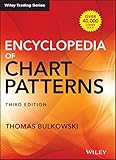
Sentiment: Bullish
Direction: Reversal
What Is The Descending Broadening Wedge Chart Pattern?
A Descending Broadening Wedge is a bullish chart pattern that commonly takes place at the end of a bearish trend as a reversal pattern.
Unlike other patterns where trend lines converge, downard sloping support and resistance diverge, creating a broadening structure that ultimately breaks upward.
How To Identify The Descending Broadening Wedge Pattern?
Price action follows two downward sloping trend lines which diverge to form a broadening structure.
Price must also fill out the pattern with at least three touches of each trend line. Volume increases during the pattern.

What Is The Psychology Behind The Chart Pattern?
The Descending Broadening Wedge pattern is a neutral to bullish chart pattern that can provide traders with valuable insights into the market’s psychology.
It’s characterized by two diverging trendlines that connect a series of lower highs and lower lows. As price approaches the bottom of the wedge, it becomes increasingly difficult for sellers to push the price lower, resulting in a reversal.
Eventually, the price breaks out of the wedge, either to the upside or downside, signaling a potential trend reversal.
The psychology behind the descending broadening wedge pattern is that there is a lack of consensus among buyers and sellers.
Both sides are competing to establish control over the price, but neither is able to gain a clear advantage.
This creates a situation where the price is range-bound, moving back and forth between the two trendlines.
Traders may interpret this as a sign of uncertainty in the market, as buyers and sellers are both struggling to establish dominance.
How To Trade The Descending Broadening Wedge Pattern?
To trade the Descending Broadening Wedge pattern, traders typically wait for the price to break through either the upper or lower trendline with a strong volume surge.
The breakout should ideally occur on higher than average trading volume, as this confirms that there is significant buying or selling pressure behind the move.
Traders may enter a long or short position depending on the direction of the breakout. A stop loss is placed on the opposite side of the wedge.
The profit target can be set based on the height of the pattern, with the expectation that the price will move at least the same distance as the pattern’s height in the direction of the breakout.
Alternatively, traders may wait for a throwback to the breakout level before entering a position.

This approach can provide a better risk-to-reward ratio, as the entry price is closer to the breakout level and the stop loss can be placed tighter.
However, it may also result in missing out on some of the initial gains from the breakout.
Ultimately, the best approach will depend on the trader’s risk tolerance, trading style, and market conditions.
It’s worth noting that the descending broadening wedge pattern can also result in a false breakout. In this situation, price briefly breaks through the trendline before reversing course.
Traders should be aware of this possibility. Also be sure to use technical indicators and other tools to confirm the validity of the breakout. Access these tools at TradingView.
Descending Broadening Wedge Performance Expectations Explained
A bullish breakout can be expected the majority of the time. Downward breakouts are rare.
To find potential targets, measure from the highest peak to the lowest trough.
Project the measurement multiplied by 83% for upward breakouts and 32% for downward break downs.


